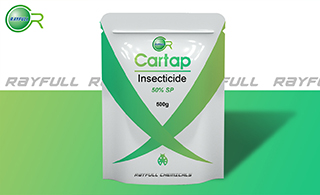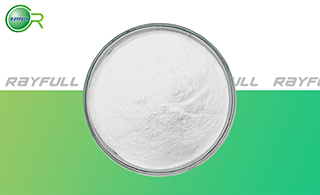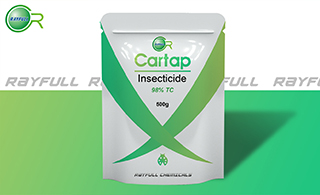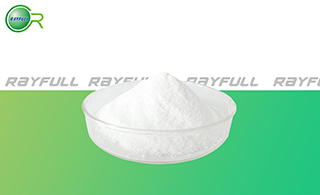Cartap
    杀螟丹 杀螟丹
Introduction: Cartap is a pesticide that was first introduced into the market in Japan in 1967. Its commercial names include Padan, Kritap, AG-Tap, Thiobel, and Vegetox. It is commonly used as a hydrochloride (C7H15N3O2S3HCl). Cartap is essentially a contact and stomach poison. It is used for the control of chewing and sucking pests and results in insect paralysis. It has been categorized as a high-effectiveness, low-toxicity, and low-residue pesticide used in rice and sugarcane fields.
Common name: Cartap
Another name: Thiobel; Sanvex; Cartap [BSI:ISO]; 1,3-Di(carbamoylthio)-2-dimethylaminopropane; 2-Dimethylamino-1,3-bis(carbamo ylthio)propane; carbamothioic acid, S,S'-(2-(dimethylamino)-1,3-propanediyl) ester; etc.
Chemical name: S,S'-(2-dimethylaminotrimethylene) bis(thiocarbamate)
Empirical formula: C7H15N3O2S2
Structural formula:

Mol. Weight: 273.80 g/mol
CAS No.: 15263-53-3
Specifications
Leading Cartap supplier
Cartap 98% TC
Cartap 95% TC
Cartap 50% SP
Packing:
BULK PACKING
Powder: 25kg/Bag, 25kg/Drum, 50kg/Drum etc.
Liquid: 200L/Drum, 20L/Drum, 10L/Drum etc.
SMALL PACKING
Powder: 1kg/Alu bag, 500g/Alu bag, 200g/Alu bag, 100g/Alu bag, 50g/Alu bag, 15g/Alu bag etc.
Liquid: 5L/Drum, 1L/Bottle, 500ml/Bottle, 250ml/Bottle, 100ml/Bottle, 50ml/Bottle etc.
Customerized packing label
Cartap FAO standard
Professional registration
HAZARDS IDENTIFICATION
Hazard statement(s)
H400: Very toxic to aquatic life.
H410: Very toxic to aquatic life with long lasting effects.
Precautionary statement(s)
P273: Avoid release to the environment.
P391: Collect spillage.
P501: Dispose of contents/container to.
Supplemental Hazard Statements: none.
MAMMALIAN TOXICOLOGY
Acute toxicity: 1) Acute oral LD50 for rats is 325 mg/kg. 2) Acute dermal LD50 for rats is >1000 mg/kg. 3) Acute inhalation toxicity LC50 (4 h) for rats is >0.54 mg/l. 4) Skin irritation: Non-irritating to skin (rabbits). 5) Eye irritation: Non-irritating to eyes (rabbits). 6) Skin sensitization for guinea pig: Not a skin sensitiser.
NOEL: NOEL (2 y) for rats is 10 mg/kg bw per day, (1.5 y) for mice is 20 mg/kg bw per day. Other Teratogenicity: No teratogenic activity at doses above the no effect observed level, were revealed. Mutagenicity: Negative results were obtained in several mutagenicity assays.
ADI (JMPR) WITHDRAWN.[1995]
Classification:
WHO Classification: II (Moderately hazardous)
EC Risk Classification: Xn - Harmful: R21, R22; N - Dangerous for the environment: R50, R53.
US EPA Classification (formulation): II (Warning - Moderately toxic)
ECOTOXICOLOGY
Effect on fish: Acute LC50 (96 h) for Carp is 1.6 mg/l. Effects on aquatic invertebrates: Acute EC50 (48 h) for Daphnia magna is 0.01 mg/l. Effects on bees: acute (48 h) LD50 is 10 μg/bee.
ENVIRONMENTAL FATE
If released to air, an estimated vapor pressure of 4.4×10-5 mm Hg at 25℃ indicates Cartap will exist in both the vapor and particulate phases in the ambient atmosphere. Vapor-phase Cartap will be degraded in the atmosphere by reaction with photochemically-produced hydroxyl radicals; the half-life for this reaction in air is estimated to be 5 hours. Particulate-phase Cartap will be removed from the atmosphere by wet and dry deposition. Cartap may undergo direct photolysis in the atmosphere based on a reported aqueous photolysis half-life of 34 days. If released to soil, Cartap is expected to have moderate to high mobility based upon Koc values ranging from 132-267. Volatilization from moist soil surfaces is not expected to be an important fate process based upon an estimated Henry's Law constant of 6.9×10-8 atm-cu m/mole. Cartap is not expected to volatilize from dry soil surfaces based upon its vapor pressure. Half-lives of Cartap in various US and European soils reported from aerobic soil metabolism studies range from <1 day to 8.2 days. If released into water, Cartap is not expected to adsorb to suspended solids and sediment based upon the Koc values. Based on aerobic soil metabolism half-lives ranging from <1 day to 8.2 days, Cartap is expected to biodegrade in water. Volatilization from water surfaces is not expected to be an important fate process based upon this compound's estimated Henry's Law constant. An estimated BCF of 2 suggests the potential for bioconcentration in aquatic organisms is low.
Usage: Cartap was developed by Takeda Chemical Industries. It is a nereistoxin analogue insecticide used to control chewing and sucking pests such as aphids, spidermites, thrips, whiteflies, and jassids on soya beans, peanuts, sunflowers, maize, sugarbeet, wheat, pearl barley, fruit (including apples, pears, plums, apricots, cherries, citrus), vines, chestnuts, tea, cotton, sugarcane, etc.
Application: Biochemistry Analogue or propesticide of the natural toxin nereistoxin. Nicotinergic acetylcholine blocker, causing paralysis by blocking cholinergic transmissions in the central nervous systems of insects. Mode of action Systemic insecticide with stomach and contact action. Insects discontinue feeding, and die of starvation. Uses Cartap hydrochloride is used, at c. 0.4-1.0 kg/ha, for control of chewing and sucking insects (particularly Lepidoptera and Coleoptera), at almost all stages of development, on many crops, including rice (Chilo suppressalis, Cnaphalocrocis medinalis, Lissorhoptrus oryzophilus and rice-leaf beetle), potatoes, cabbage and other vegetables (Agromyzidae, Leptinotarsa decemlineata and Plutella xylostella); also on soya beans, peanuts, sunflowers, maize, sugar beet, wheat, pearl barley, pome fruit, stone fruit, citrus fruit, vines, chestnuts, ginger, tea, cotton, and sugar cane.
|







